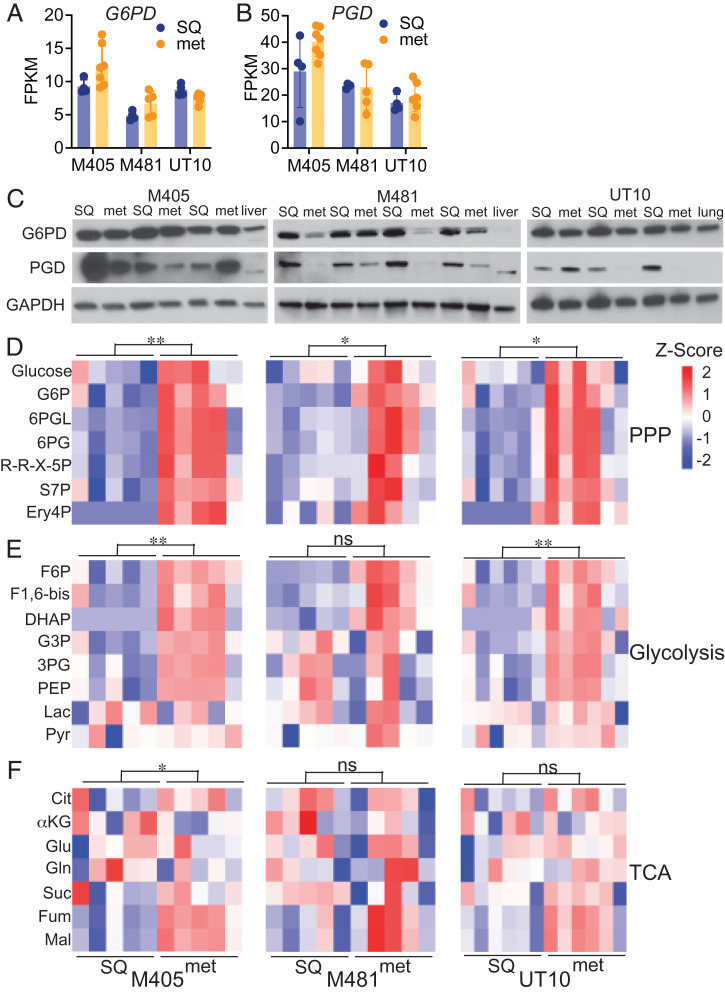Fig. 1.
Pentose phosphate pathway metabolites are more abundant in metastatic as compared to subcutaneous primary melanomas. (A–C) Subcutaneous tumors (SQ) and metastatic nodules (met) were harvested from the same mice xenografted subcutaneously with M405, M481, and UT10 patient-derived melanomas. G6PD (A) and PGD (B) transcripts were assessed by RNA-sequencing analysis (n = 4 to 7 samples per melanoma). (C) Western blot analysis of G6PD and PGD in subcutaneous and metastatic tumors from mice xenografted with M405, M481, and UT10 melanomas. Each pair of adjacent subcutaneous and metastatic samples were obtained from the same mouse (n = 3 to 4 mice per melanoma). GAPDH is shown as a loading control. Lysates from normal mouse liver or lung are included as controls. (D–F) Relative levels of pentose phosphate pathway (PPP) (D), glycolytic (E), and TCA cycle (F) metabolites in subcutaneous and metastatic tumor specimens obtained from mice xenografted with M405 (Left), M481 (Center), or UT10 (Right) melanomas. Each column represents a different tumor from a different mouse. Metabolite abbreviations are defined in SI Appendix, Fig. S1. The statistical significance of each pathway was assessed by comparing the major effect between subcutaneous and metastatic tumors using a repeated-measure two-way ANOVA. Data represent mean ± SD. Statistical significance was assessed using Student's t tests (A and B) or a two-way repeated-measures ANOVA on the log2-transformed data (D–F). Statistical tests were two-sided. Multiple comparisons were adjusted by the FDR method. *P < 0.05, **P < 0.01, ns = not significant.

